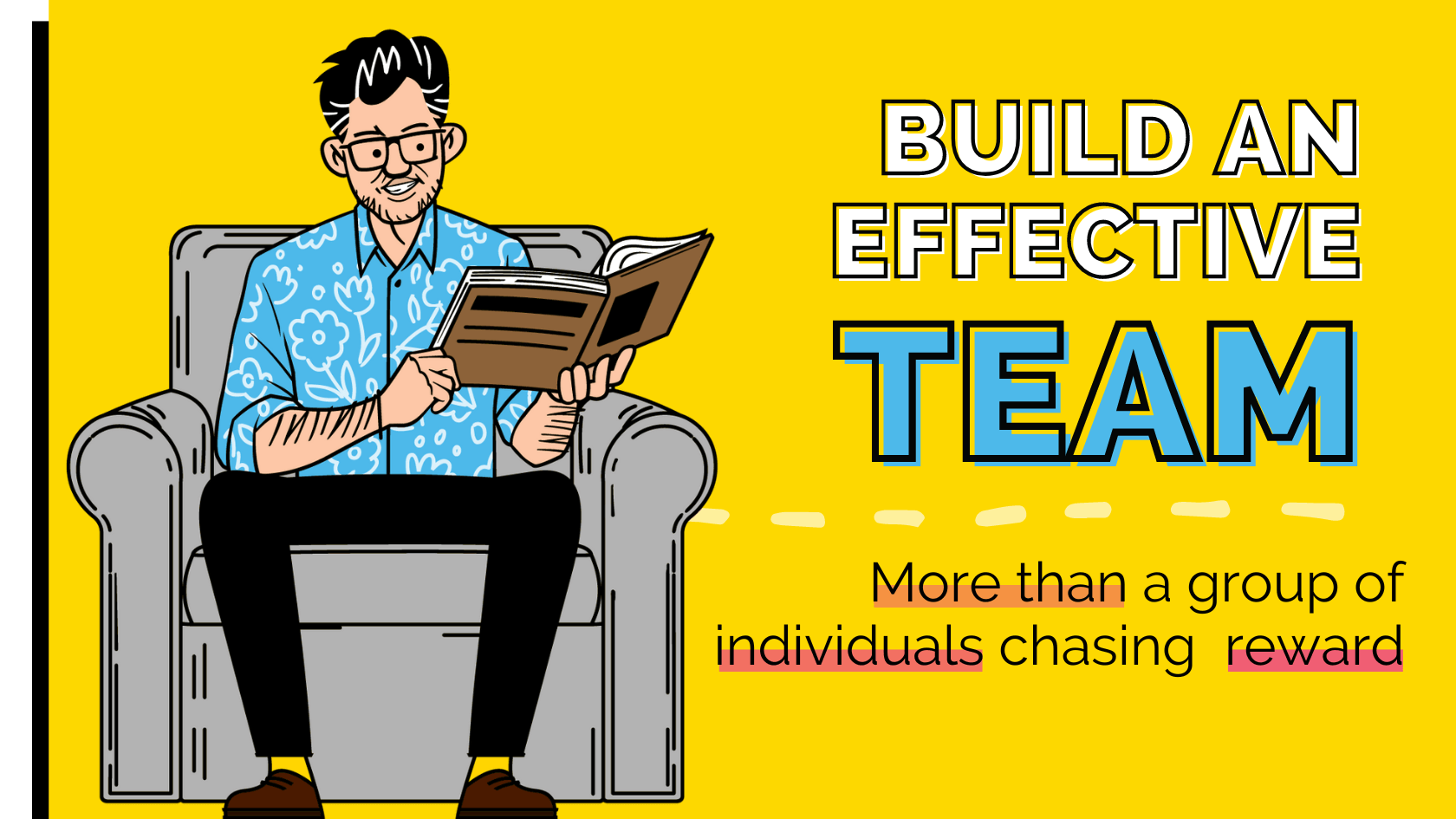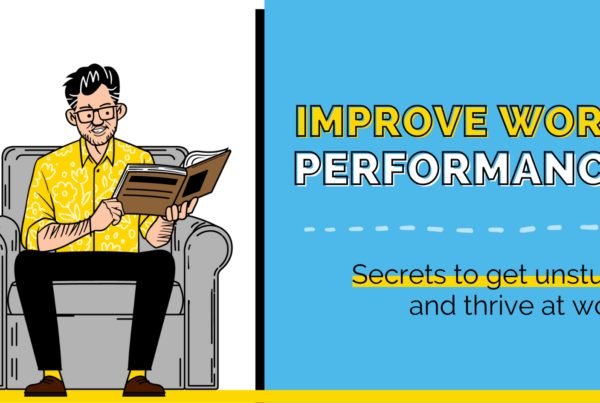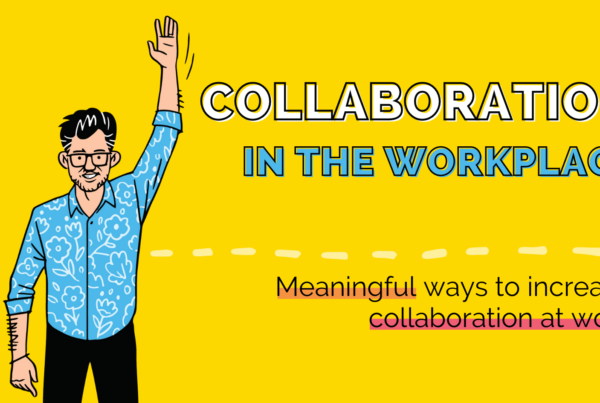
During your life, you’re going to spend about 90,000 hours at work. And, depending on your job, at least 50% of your time will be spent collaborating with your colleagues.
Given the sheer amount of time we spend with the people we work with, it’s no wonder our working relationships have such a big influence on our success and happiness.
It’s easy to understand why. Pursuing any worthy goal is a team effort. If your work relationships and communication are less than ideal, it’s going to make pursuing that goal that much harder.
That’s why working with an effective team – one that gets each other – is so important to doing great work.
Putting a bunch of people onto a project, even if they’re the most brilliant, lovely people, doesn’t magically make them an effective team.
I say this after having worked with hundreds of teams – some with Jedi-level collaboration and others hardly able to make progress. And so here’s what I’ve learned about building effective teams.
Effective Teams vs. People That Work Together
The art of teamwork has eluded many companies for decades, with most corporate teams significantly underperforming. You might be in a group that calls itself a ‘team’, but are you really one?
Chances are, you’re in what scientists call a “working group”: a collection of managers and employees masquerading as a team, void of any sort of collaboration, shared accountability, or vision.
This begs the question – what makes a real team?
As J. Richard Hackman, who began researching teams in the 1970s, discovered, it comes down to three factors. Bear with me while I paraphrase them:
- A focus on great work
- An understanding of the rules
- A commitment to staying generous
In order to truly be a team, you have to satisfy each of these conditions. If you don’t, then you’re really just a group of individuals pursuing your own separate goals.
If I understand the rules and I commit to staying generous, but I’m doing good, or even bad, work, then I’m letting my team down. If I do great work and commit to staying generous, but I don’t understand the rules of the group or project, my work is likely to careen wildly into areas that make it irrelevant.
Once you understand and can implement the factors that make your team great, you can really begin to thrive in your pursuit of collective worthy goals.
The Greatest Answers Come From the Greatest Questions
Become a better leader. Better teacher. Better person.
Learn how to ask the right questions the right way with this free download.
Eight Ways to Ask a Question Well
Creating Effective Conditions for Your Team to Thrive
I’ve never seen a truly great team come together by accident. To get great people, you have to intentionally design and manage the way your team operates. Here’s how to get started:
1. Amplify What’s Best
To get the best out of anyone else, you need to know how to get the best out of yourself.
It’s the first thing I touch on in my new book, How to Work with (Almost) Anyone – what’s your best? When do you truly shine?
We all perform work that takes us into a beautiful flow state. I call it genius work. It’s those instances when time speeds up and slows down; you feel alive and exhilarated. You even think to yourself for a brief second: “Man, I’d do this work for free…Well, actually maybe not, but I’m enjoying it.”
Once you understand your strengths and weaknesses, you can build a team that complements both.
I’m really good at trusting and supporting people. I love helping people move beyond their comfort zone and unlock what truly makes them great.
What I suck at are details. Appointments, deadlines, that sort of thing. My brain just isn’t wired for it – but other peoples’ are, and when we get together on a team we can make up for our mutual deficits.
By amplifying what’s best in yourself and others, you can find the sweet spot where everyone’s talents shine brightest, and make space for plenty of genius work to happen.
2. Understand How You Work With Others
Once you know who you are at your best, it’s time to think about how you like to work with people.
It’s the second question I ask in How to Work With (Almost) Anyone: what are your work patterns and preferences?
It’s funny, really. Most of us are never asked: “What’s your philosophy? What’s your mantra? How do you work?”
But understanding how you work with people can be way more important than what you’re actually working on.
It’s worth taking the time to introspect and shape your own management manifesto – a declaration of your intentions, motives, and beliefs to the team you manage.
You can then use it as part of what I call the Keystone Conversation – a discussion with your teammates to discover your and their working habits, preferences, and how to bring out the best in each other.
3. Learn From Bad Dates
I’m not talking about Bumble or Tinder (although I’m sure there are definitely some lessons there).
By bad dates, I mean workplace relationships from the past that went south. We’ve all had them – people whose decisions you couldn’t understand, who frustrated you, or who you couldn’t quite see eye-to-eye with.
Maybe you argued and felt hurt by the interaction. Or maybe you convinced yourself the whole issue was entirely the other person’s fault – life is rarely so black and white.
I like to cast my mind back to bad dates and meditate on what went wrong. It takes two to tango, after all, so even if the other person was responsible for 90% of the squabble (and this is generous), you need to figure out and learn from the 10% part you played.
This is key to growing as a communicator and a person. Recognize that although all your past relationships had their individual quirks, they provide good data about patterns of success and failure.
4. Commit to Repair
Even with all the empathy in the world, your working relationships will still experience natural highs and lows.
It’s the way of the universe. To quote John Bender in TheBreakfast Club:
“Screws fall out all the time. The world is an imperfect place.”
Screws do fall out and things do fall apart – but we have the opportunity to put them back together.
To ensure that my team is working like clockwork, I like to commit to regularly repairing and caring for the health of my workplace connections. When cracks start to show, I go out of my way to mend the damage and restore harmony.
By committing to repair over deterioration, you’ll create a ripple of positivity and psychological safety that will reverberate within your entire team.
5. Make Sure Your Team Is Doing More GREAT Work
To get anywhere worth going, you and your team must find the work you do thrilling, important, and daunting.
Another way of saying that is – do more great work.
What is great work? It’s work that matters. Work that has meaning. Work that has a positive impact.
It’s the perfect confluence of your collective strengths, interests, and values. It makes a difference and leaves the world in better shape than before.
Contrast this to bad work, which drains the life force out of everyone involved. You know the kind, I know the kind – meetings that could’ve been emails, outdated processes, hierarchies that don’t make sense.
To do more great work, look at the bigger picture. Try to see the overarching goal that hangs above the myriad of smaller day-to-day tasks. What really needs to be done? What will drive the most value? What can be ignored?
This means understanding what to say yes to, but also, more importantly, what to say no to. And this can be scary. Saying no is often unpleasant, especially to colleagues, or even managers.
But by learning how to say no, you can parse out what’s worth doing and what isn’t, and in the process, ensure that you and your team do more great work and less bad work.
6. Master the Art of Feedback
Another vital aspect of a high-performing team is consistent progress.
A huge part of forging progress is giving feedback so people know how they’re doing and how they can improve. But even though constructive feedback is a wonderful gift, many avoid giving it.
And I’m not saying that from some high horse, because I feel the same way.
Giving feedback sometimes sucks. It can be awkward and uncomfortable. You don’t want to hurt someone’s feelings. You don’t want to tell them that the work they did is bad.
But giving feedback is undoubtedly valuable – the trick is to learn how to give it well.
A good first step is to ask your teammates how they like to receive feedback. Quick catch-up between projects? Quarterly reviews? Paper planes with encouraging messages written inside?
This allows you to deliver feedback in a way that’s positive to the other person.
I also try my hardest to untangle my opinions from the facts. Using objective information allows you to give much more leveled and unbiased feedback on someone’s work.
And after you’ve given feedback, ask your teammates what was useful and what could’ve been done better. By understanding what worked and what didn’t, you improve the feedback process and make the whole experience better for everyone.
7. Leverage Neuroscience to Build Your Tribe
In The Coaching Habit, I talk about this neuroscience concept known as the TERA quotient.
Tribe, Expectations, Rank, and Autonomy. Here’s the thing. Five times a second, your teammates’ brains scan their environment and ask: am I safe here, or is it dangerous? Is there a risk or a reward?
If they feel safe, they’re more engaged, creative, and authentic. But if it feels dangerous, they sink into fight-or-flight mode, where they feel threatened and anxious.
Great leaders build safety into the team dynamic by harnessing the power of the TERA quotient.
Simple behaviors like checking in with your team about how they’re doing and how you physically orient yourself to another person can both improve their experiences of belonging to your team.
8. Make Coaching a Centerpiece
Coaching employees is another powerful way to increase the TERA Quotient – and help your whole team unleash their potential.
If you’ve read any of my books, you’ll know I think that giving advice is overrated. Dumping advice on someone won’t help them learn – but asking the right questions will.
When you move from advice-giving to listening and asking thoughtful questions, your team’s sense of tribe-iness goes up. You give people more autonomy and show that your rank is the same.
By giving your team the opportunity to figure out a solution on their own terms, you get to help them find an answer for themselves.
Instead of being a rescuer, you become a facilitator of self-discovery and mutual growth.
Start Building the Best Possible Team Dynamics
Who we work with and how we work with them have a RIDICULOUSLY large influence on our happiness and success at work.
Don’t leave those relationships to chance. Take charge, invest in them, and watch your world transform.
If you’d like to explore these concepts in more detail, I flesh them out in my newest book, How to Work With (Almost) Anyone.




